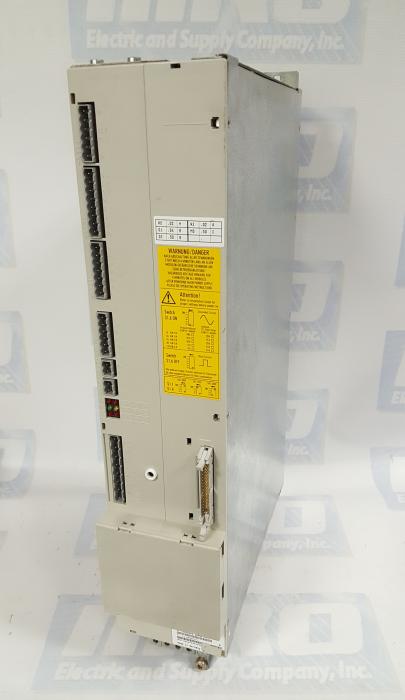You can check out our previous blog post on the UD73 here for additional setup and configuration info.
For UD73 configuration, most common parameters are arranged in one concise menu. Hundreds of user-configurable functions separated into 20 logical menus provide quick setup for advanced application. For positioning, ratio control, camming and multi-axis systems, plug-in option modules easily extend the Unidrive’s capabilities. High horsepower Unidrives cover the range from 200 to 1600 HP. The 300 amp power module and control pod (the “brain”) are available as components. They are also available as a packaged drive solution that includes fusing and a disconnect. (See our Packaged Drive Section, pages 120-123 and 128-133.) With the UD73’s extensive selection of communication, application, feedback and I/O modules, you can easily upgrade the performance of your drive. Yet, it is simple to configure by using the drive keypad, a remote keypad (CTKP), or UniSoft, the UD73 Windows based drive set-up tool. You can tailor each
Unidrive to be the drive you want when you want it.
-
- 1 to 30 HP, 3 Phase, 208-230 VAC
-
- 1 to 1600 HP, 3 Phase, 380-460 VAC
-
- UniSoft Windows based configuration tool
-
- Configurable analog and digital I/O
The UD73 configuration is suited for use with AC brushless servo motors. Servo control is ideal for applications requiring load transfer to and from any position, at any speed. The UD73 is designed for both stand-alone and multi-axis system applications.
In regen mode, two standard UD73’s operate together to provide full four-quadrant control of an AC motor. The system consists of two basic sub-systems, one being a Unidrive operating in any of its standard operating modes (open loop, vector or servo), and the other is a Unidrive operating in its regenerative mode. The link between the two sub-systems is simply the DC bus connections. In this mode, the UD73 is capable
of either supplying power to the DC bus of the Unidrive controlling the motor or removing power from the DC bus of the Unidrive controlling the motor and returning it back to the power line.
Updated on March 7, 2023 by Brian Hughes

